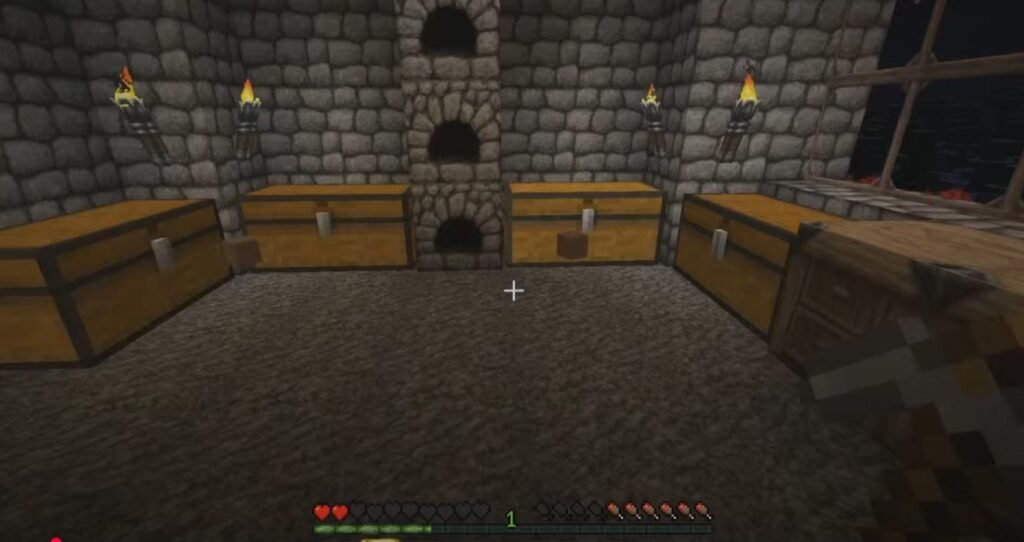In the world of video game development, music isn’t just an afterthought—it’s a vital component of storytelling, gameplay, and player engagement. At Sunset Music, we understand that music plays a central role in creating memorable, immersive experiences. Whether it’s a peaceful stroll through a fantasy landscape, a tense escape from a monster-laden dungeon, or a triumphant moment after defeating a boss, the right track can elevate the entire experience.
One of the key areas where music placement shines is in video games. Sunset Music has had the privilege of working with talented artists like RichTaste, whose track “Party King”, written by Stefan Fankhauser, found a home in one of the most popular games in the world, Minecraft. This placement highlights the dynamic potential of music in games and showcases how Sunset Music artists’ work can enhance the virtual worlds players explore.
In this article, we dive into the fascinating world of video game music placement, how it works, and why it’s such a crucial aspect of game design. We’ll also explore how Sunset Music approaches these placements to create the best auditory experiences for players while giving our artists exposure to millions of listeners.
1. Matching Genre and Atmosphere
The relationship between music and game genre is foundational to creating the right atmosphere. Sunset Music prides itself on understanding this interplay, ensuring that each track is carefully chosen to fit the game’s theme, setting, and tone.
For example:
- Role-playing games (RPGs) often use orchestral music to create a grand and epic feel, immersing players in a rich, narrative-driven world. These games require expansive, sweeping tracks that match the game’s scale and the player’s journey.
- Action games, on the other hand, benefit from electronic or darker music. These styles build tension, urgency, and intensity, keeping players on the edge of their seats as they navigate battles or high-stakes situations.
- In the case of games with a retro or nostalgic vibe (such as Minecraft), music choices reflect that aesthetic. 8-bit chiptune music helps reinforce the game’s sense of playfulness and simplicity, while still maintaining its immersive qualities.
Sunset Music understands that every game has its unique sonic needs, and we specialize in matching the genre of music to fit the atmosphere of each title. “Party King” by RichTaste, written by Stefan Fankhauser, in Minecraft, for instance, brings the right amount of high-energy, upbeat vibes that resonate with the game’s open-world sandbox style, making it the perfect soundtrack for players as they build, explore, and create.
2. Amplifying Emotional Impact
Music has the ability to evoke emotions that visuals alone cannot convey. In video games, where storytelling is as much about player experience as it is about plot, music becomes an emotional guide, guiding players through different moods, settings, and challenges.
In much the same way that film scores enhance a movie’s emotional depth, video game music underscores pivotal moments:
- Suspenseful moments can be heightened with eerie or intense tracks that build tension, forcing players to feel the stakes rise.
- Triumphant moments are paired with uplifting music that rewards the player’s achievements, such as completing a quest or defeating a major boss.
- Character-driven themes bring depth to specific characters, signaling to the player when a character’s arc is about to shift or when a major story event occurs.
Sunset Music seeks to amplify these emotions through our custom music placements, ensuring that each song supports the narrative and emotional flow of the game. “Party King” by RichTaste, written by Stefan Fankhauser, exemplifies this idea—it’s not just a song for background noise, but a track that encapsulates the playful, carefree nature of Minecraft, keeping players energized as they go about their creative adventures.
3. Integration into Gameplay
One of the most innovative aspects of video game music is how it can be integrated directly into the gameplay. This can take on several forms:
- In rhythm games, the player’s actions are directly tied to the music. Successful actions result in harmonious sounds, while errors might result in dissonant notes.
- In action games, the music dynamically changes based on the player’s situation. For instance, if a player enters a dangerous area, the music may turn more intense to signal heightened risk, or a victorious theme might play after a hard-earned win.
- In narrative-driven games, music can be used to underscore specific story moments. Some games have tracks that play only at critical points in the story, such as when the player reaches a key location or uncovers a major plot twist.
Producers and game developers often look to music placements that can interact with gameplay mechanics, creating a more immersive experience. At Sunset Music, we take this into account when considering music for placement. We believe in the seamless integration of music and gameplay to ensure a cohesive experience that feels natural and enhances the player’s journey.
4. Special Locations and Themes
Video games often feature unique locations or characters that come with their own distinct musical themes. These musical motifs help create a sense of place, immersing the player deeper into the game’s world.
Think about games like The Legend of Zelda, where the Temple of Time has its own ethereal, memorable theme, or The Witcher III, where Kaer Morhen is represented by a haunting, melancholic melody. These musical themes not only give players a sense of identity for each location or character, but they also act as auditory cues that guide players through their journey.
At Sunset Music, we understand the importance of creating music that aligns with specific locations or characters within the game, ensuring that every environment feels alive, unique, and emotionally connected to the player. The right track can immediately make a player feel like they’ve entered a new realm, making each new discovery or plot development even more impactful.
5. Sync Licensing and Rights
An essential part of the music placement process is sync licensing—obtaining the necessary rights to use a song in a game. The legal side of things can be complex, but understanding the different types of licenses and how they work is crucial for both the artists and the developers.
At Sunset Music, we handle the intricate legal details of sync licensing, ensuring that our artists receive fair compensation for their work. We work with developers to ensure that all rights are cleared, and that both parties understand how the music will be used and how royalties will be distributed. It’s our goal to protect the artists while also providing the best possible musical fit for the game.
Sunset Music’s Role in Video Game Music Placement
As Sunset Music continues to grow, we remain committed to helping our artists reach new heights by securing music placements in games, films, and other media. We understand that music in video games is more than just background noise—it’s an integral part of the player’s experience and the narrative. With artists like RichTaste, whose track “Party King”, written by Stefan Fankhauser, found a home in Minecraft, we are able to showcase the dynamic power of music and the unique ways it interacts with gameplay.
Through our understanding of genre, atmosphere, emotional impact, and integrated gameplay, Sunset Music is at the forefront of music placements in the video game industry, working tirelessly to ensure that each track enhances the game experience while giving our talented artists the recognition they deserve.
If you’re a game developer or an artist looking for your next big placement, Sunset Music is here to bring you closer to your goals—connecting the dots between amazing music and unforgettable gaming experiences.





